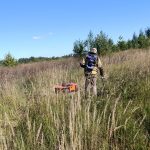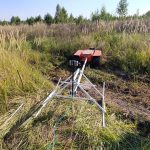Geopager Archaeology team has qualified for Expedition. Earth contest
On October 4, 2025 the Geopager Archaeology team representing the Institute of Archaeology named after A. Kh. Khalikov of the Tatarstan Academy of Sciences successfully passed the qualification stage of the Expedition. Earth All-Russian Technological Contest organized by the NTI Fund and the Agency for Strategic Initiatives. A total of 24 teams from Russian regions participated in the contest, seven of which reached the finals, including Geopager Archaeology.
The contest is aimed at developing application methods and technologies for unmanned ground vehicles designed to detect and classify objects on the surface and underground at a depth of up to five meters. Testing takes place in real settings – at archaeological and engineer reconnaissance sites. Expedition. Earth therefore combines technical creativity, advanced robotics and practical tasks of archaeology to create a unique platform for interaction between engineers and humanitarians.
The Geopager Archaeology team unites experts and organizations representing both academic and applied science. It includes the Institute of Archaeology named after A. Kh. Khalikov of the Tatarstan Academy of Sciences, the Scientific Research Laboratory of Quantum Magnetometry of the Ural Federal University, PROFTSIFRA LLC, Quantum Magnetic Pipe Test LLC and New Geodetic Systems LLC.
The Institute of Archaeology named after A. Kh. Khalikov has a significant capacity and experience in the field of implementing high-technology solutions in archaeology. Over the last several years the Institute has actively developed geophysical surveys, digital recording and cultural layer data analysis using the contemporary methods of magnetometry, georadar probing and 3D modeling. Due to these competencies, the team successfully passed qualification tests, proving the high integration level of scientific knowledge and engineering solutions.
The team is preparing for final trials which will take place in areas with real archaeological sites. At the next stage, the participants will solve tasks of finding hidden artefacts and elements of ancient structures using robotic complexes, sensors and spatial data analysis systems.



